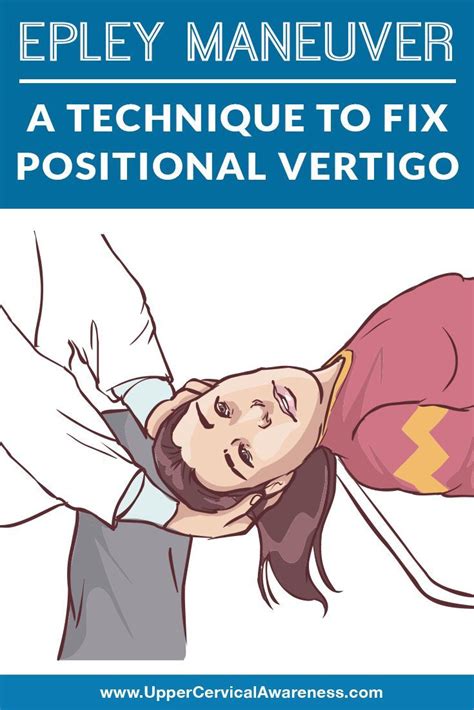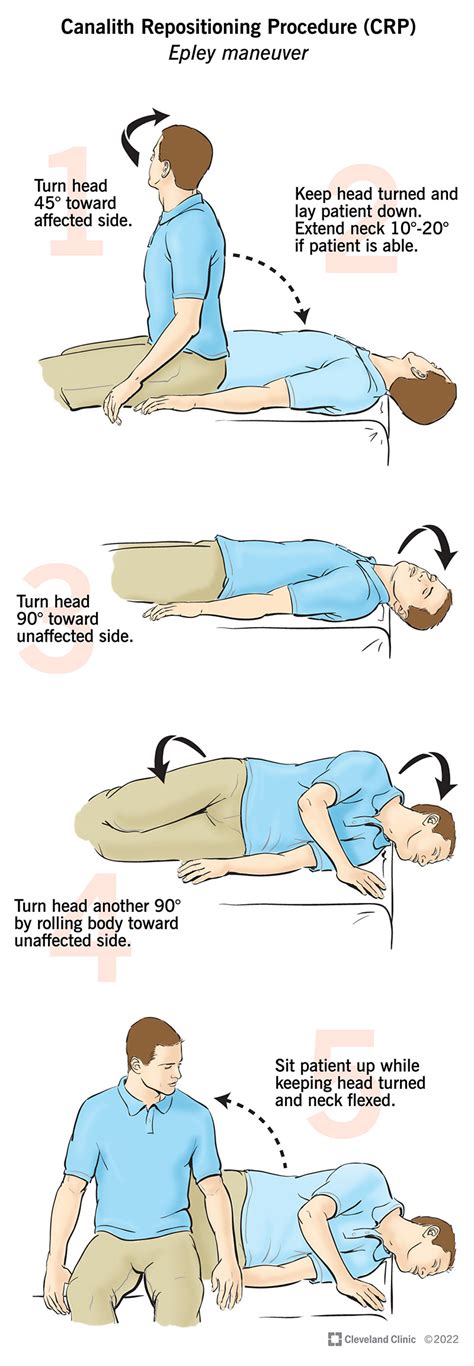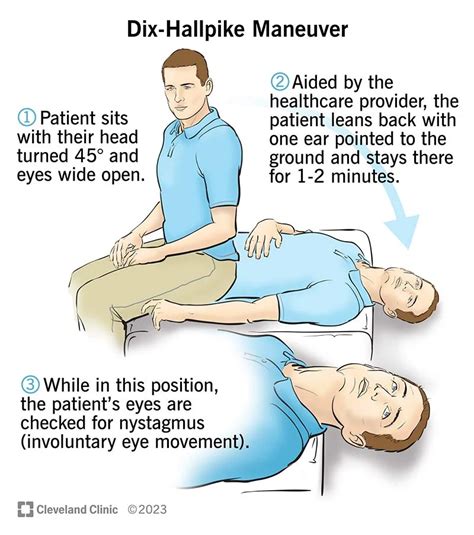Intro
Learn effective Vertigo Maneuver Techniques, including Epley and Semont methods, to treat benign paroxysmal positional vertigo (BPPV) and inner ear balance disorders with physical therapy exercises and canalith repositioning procedures.
The vertigo maneuver techniques have become a crucial aspect of medical treatment, particularly in the field of otolaryngology and neurology. These techniques are designed to help alleviate the symptoms of vertigo, which is a type of dizziness characterized by the sensation of spinning or moving when one is actually stationary. Vertigo can be caused by a variety of factors, including inner ear problems, head injuries, and certain medications. In this article, we will delve into the different vertigo maneuver techniques, their benefits, and how they work.
The importance of vertigo maneuver techniques cannot be overstated. Vertigo can have a significant impact on a person's quality of life, making it difficult to perform daily activities, drive, or even walk without feeling dizzy or disoriented. In some cases, vertigo can also lead to nausea, vomiting, and headaches, further exacerbating the condition. By using vertigo maneuver techniques, individuals can reduce the frequency and severity of their vertigo episodes, improving their overall well-being and ability to function.
The use of vertigo maneuver techniques has gained popularity in recent years due to their non-invasive and effective nature. These techniques involve a series of specific movements and exercises that help to restore balance and equilibrium to the inner ear and brain. By performing these maneuvers, individuals can help to alleviate the symptoms of vertigo and improve their overall sense of balance and stability.
Understanding Vertigo and Its Causes

Some common causes of vertigo include benign paroxysmal positional vertigo (BPPV), labyrinthitis, and vestibular neuritis. BPPV is a condition in which small crystals in the inner ear become dislodged and cause vertigo. Labyrinthitis is an inner ear infection that can cause vertigo, hearing loss, and tinnitus. Vestibular neuritis is an inflammation of the vestibular nerve, which can cause vertigo, dizziness, and balance problems.
Types of Vertigo Maneuver Techniques
There are several types of vertigo maneuver techniques, each designed to address specific causes and symptoms of vertigo. Some of the most common techniques include the Epley maneuver, the Semont maneuver, and the Brandt-Daroff exercise.- The Epley maneuver is a series of movements that help to relocate the small crystals in the inner ear that cause BPPV.
- The Semont maneuver is a technique that involves a series of rapid movements to help alleviate the symptoms of BPPV.
- The Brandt-Daroff exercise is a series of movements that help to improve balance and reduce the frequency and severity of vertigo episodes.
Benefits of Vertigo Maneuver Techniques

Some of the benefits of vertigo maneuver techniques include:
- Reduced symptoms of vertigo, including dizziness and nausea
- Improved balance and equilibrium
- Reduced frequency and severity of vertigo episodes
- Improved overall quality of life
- Reduced reliance on medication
How to Perform Vertigo Maneuver Techniques
To perform vertigo maneuver techniques, it is essential to follow a series of specific steps and movements. These movements should be performed slowly and carefully to avoid exacerbating the condition.- The Epley maneuver involves a series of movements, including:
- Sitting on the edge of a bed or table with legs dangling
- Turning the head to the affected side and lying down
- Remaining in this position for 30 seconds to 1 minute
- Slowly sitting up and turning the head to the unaffected side
- The Semont maneuver involves a series of rapid movements, including:
- Sitting on the edge of a bed or table with legs dangling
- Quickly turning the head to the affected side and lying down
- Remaining in this position for 30 seconds to 1 minute
- Slowly sitting up and turning the head to the unaffected side
- The Brandt-Daroff exercise involves a series of movements, including:
- Sitting on the floor with legs straight out in front
- Turning the head to the affected side and lying down
- Remaining in this position for 30 seconds to 1 minute
- Slowly sitting up and turning the head to the unaffected side
Common Mistakes to Avoid When Performing Vertigo Maneuver Techniques

Tips for Performing Vertigo Maneuver Techniques Successfully
To perform vertigo maneuver techniques successfully, it is essential to follow a series of tips and guidelines. Some of the most important tips include: * Performing the movements slowly and carefully * Holding each position for the recommended amount of time * Following the recommended sequence of movements * Avoiding common mistakes that can exacerbate the condition * Practicing the techniques regularly to improve balance and equilibriumVertigo Maneuver Techniques for Specific Conditions

- BPPV: The Epley maneuver and the Semont maneuver are commonly used to treat BPPV.
- Labyrinthitis: The Brandt-Daroff exercise and other vestibular rehabilitation exercises are commonly used to treat labyrinthitis.
- Vestibular neuritis: The Brandt-Daroff exercise and other vestibular rehabilitation exercises are commonly used to treat vestibular neuritis.
Vertigo Maneuver Techniques for Children and Adults
Vertigo maneuver techniques can be used to treat vertigo in both children and adults. However, the specific techniques and exercises used may vary depending on the age and condition of the individual.- Children: The Epley maneuver and the Semont maneuver are commonly used to treat BPPV in children.
- Adults: The Brandt-Daroff exercise and other vestibular rehabilitation exercises are commonly used to treat vertigo in adults.
Conclusion and Future Directions

We invite you to share your thoughts and experiences with vertigo maneuver techniques in the comments section below. Have you used these techniques to treat vertigo? What were your results? Do you have any questions or concerns about vertigo maneuver techniques? We look forward to hearing from you.
What are the most common causes of vertigo?
+The most common causes of vertigo include benign paroxysmal positional vertigo (BPPV), labyrinthitis, and vestibular neuritis.
How do vertigo maneuver techniques work?
+Vertigo maneuver techniques work by restoring balance and equilibrium to the inner ear and brain. They involve a series of specific movements and exercises that help to alleviate the symptoms of vertigo.
Can vertigo maneuver techniques be used to treat all types of vertigo?
+No, vertigo maneuver techniques may not be effective for all types of vertigo. It is essential to consult with a healthcare professional to determine the best course of treatment for your specific condition.
